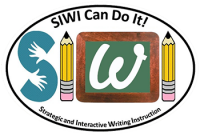An analysis of deaf students’ spelling skills during a year-long instructional writing approach
Tags: spelling, written languageNumerous studies have shown that spelling presents unique challenges for children who are deaf or hard of hearing (d/hh) and most do not develop age appropriate spelling skills. However, it is critical that these skills are acquired in order to use written language for academic or vocational purposes. Spelling errors from the writing samples of 29 middle school students in a state school for the Deaf were analyzed to examine changes over time. Samples were gathered before, during, and after a year-long writing intervention using Strategic and Interactive Writing Instruction (SIWI). When using SIWI, students are exposed to proper spelling during guided writing instruction; however, spelling is not a specific focus of each lesson. In this study, a linguistic analysis of spelling errors was used to assess each child’s understanding of the phonological, morphological, orthographic, semantic and visual imagery rules that apply to written words. No significant improvements in spelling were noted and the results indicate that spelling should be targeted during writing lessons. The results provide important information on the acquisition of spelling skills with this unique population and the use of narrative samples to assess spelling
Read in Full